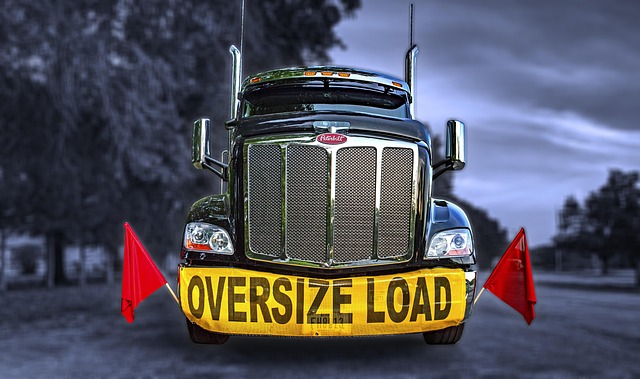Looking to register your car in California? This comprehensive guide breaks down the process step-by-step, ensuring a smooth transition. From understanding essential requirements and gathering crucial documents for DMV VIN verification to preparing your vehicle for inspection, you’ll navigate California’s registration process effortlessly. We also cover post-registration tasks to maintain your vehicle’s legal status in the Golden State.
- Understand the Requirements for Car Registration in California
- Gather Necessary Documents for DMV Vin Verification
- Prepare Your Vehicle for Inspection and Registration
- Complete the DMV Registration Process Step-by-Step
- Post-Registration Steps: Ensuring Your Vehicle's Legal Status in CA
Understand the Requirements for Car Registration in California

Before registering your car in California, it’s crucial to understand what’s required. The California Department of Motor Vehicles (DMV) demands several key documents and inspections for all vehicles seeking registration. One essential step is the DMV VIN verification process, where the unique vehicle identification number (VIN) is cross-checked to ensure its authenticity and history. This includes verifying the vehicle’s title, checking for any outstanding liens, and confirming that it meets safety standards.
Additionally, a valid inspection certificate from a certified mechanic or a mobile vin verifier might be needed. A mobile vin inspection service can provide on-site verification, making the process more convenient for some. Ensure you have all necessary documents ready to streamline the registration at your local DMV office.
Gather Necessary Documents for DMV Vin Verification

Before heading to the California Department of Motor Vehicles (DMV), ensure you have all the required documents for a smooth dmv vin verification process. This typically includes your vehicle’s registration certificate, proof of insurance, and a valid driver’s license. The mobile vin inspection or mobile vin verifier is also crucial in this step as it allows for on-site verification of your vehicle’s unique vehicle identification number (VIN).
Having these documents ready demonstrates your preparedness and ensures that the DMV staff can efficiently complete the dmv vin verification, clearing you to register your car without any delays. Remember, accurate information and proper documentation are key to a seamless transaction during this critical step in the registration process.
Prepare Your Vehicle for Inspection and Registration

Before heading to the DMV for registration, ensure your vehicle is ready with a successful vin inspection. This process involves verifying the Vehicle Identification Number (VIN), which is crucial for accurate record-keeping and security purposes. You can opt for a traditional vin inspection at a designated station or consider a mobile vin verification service, making it more convenient. During this check, all essential details of your vehicle are cross-referenced with the manufacturer’s records to ensure authenticity.
Prepare by having your car in good working condition, as any significant modifications or discrepancies might delay the process. The DMV vin verification is a critical step that ensures your vehicle complies with California’s registration standards and helps prevent fraud. By addressing these preliminary checks, you streamline the registration process and can expect a smoother experience at the DMV.
Complete the DMV Registration Process Step-by-Step

To complete the DMV registration process for your car in California, start by gathering all necessary documents, including your vehicle’s registration from the previous state, proof of insurance, and a valid driver’s license. Next, visit your local DMV office or use their online services to initiate the registration. During this step, you’ll need to provide detailed information about your vehicle, such as make, model, year, and color, along with your personal data.
A crucial part of the process involves the DMV VIN verification, where the agency will cross-check your car’s unique Vehicle Identification Number (VIN) to ensure it matches the details in their records and that it hasn’t been reported as stolen or has any outstanding issues. To expedite this, many Californians opt for a mobile vin inspection or mobile vin verifier service, which allows them to complete this step conveniently from their homes. Once your car passes all verifications, you’ll be able to finalize the registration and obtain your new California vehicle license plate.
Post-Registration Steps: Ensuring Your Vehicle's Legal Status in CA

After successfully registering your vehicle with the DMV, there are a few crucial post-registration steps to ensure your car maintains its legal status in California. One essential step is to undergo a DMV VIN verification process, which cross-references your vehicle’s unique identifier (VIN) against the state’s records. This ensures that the information on file aligns with your registered data, including details like make, model, and year.
Additionally, consider scheduling a mobile vin inspection or vin inspection service to have an expert verify your vehicle’s history and documents. These services can provide peace of mind by ensuring all paperwork is in order, and your car complies with California’s regulations. This proactive approach helps avoid future issues and potential penalties related to registration and vehicle maintenance.
Registering a car in California involves understanding state requirements, gathering essential documents for DMV VIN verification, preparing your vehicle for inspection, and completing the registration process step-by-step. Once registered, ensure your vehicle’s legal status by adhering to post-registration steps. This guide provides a straightforward approach to navigating the California car registration process, making it easier for folks to comply with state regulations and keep their vehicles in good standing.
